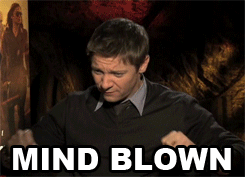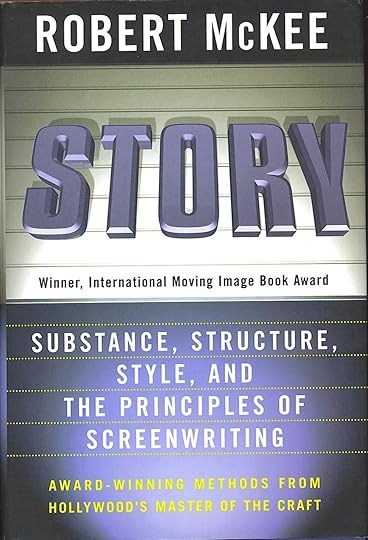5 Secrets of Complex Supporting Characters
 Supporting characters don’t get nearly enough love.
Supporting characters don’t get nearly enough love.
We come up with amazing protagonists who do amazing things and we labor to give them solid and complicated character arcs. But after all that work on the story’s forerunner, what happens to the supporting characters?
Too often, they’re an afterthought.
Of course, your protagonist needs a dad or a best friend or a little old neighbor lady, so you stick them into the story. You can see them already, right? But the sad part is many writers get no farther than that in planning these incredibly important characters.
Even the best of protagonists can’t carry your entire story. You need a cast of supporting characters who are every bit as complex, rounded, and interesting in their own right. Not only do complex supporting characters create a more interesting and realistic world for your story, they’re also crucial ingredients in rounding out your protagonist. Robert McKee says in Story:
In essence, the protagonist creates the rest of the cast. All other characters are in a story first and foremost because of the relationship they strike to the protagonist and the way each helps to delineate the dimensions of the protagonist’s complex nature.
Does this mean you must create a complete character arc for every single minor character in your story?
Definitely not. Many of your supporting characters will have comparatively tiny roles–perhaps only appearing for a few scenes. Fleshing out a entire character arc for all of them would land somewhere between that’s crazy and that will make you crazy. Suffice it that it’s overkill.

All you need to create complex supporting characters–no matter how large or small their roles within the story–is to answer five important questions about each of your minor characters.
1. What Does This Supporting Character Want?
If you’re only going to ask one question, this is the one. If you’re Dr. Frankenstein, and your characters are your little monsters, then this question is the vivifying electricity that brings every single one of them to life–from your protagonist right on down to the walking-est of walk-ons.

Take a look at your cast of supporting characters. I’ll bet you a lot of juice you’re going to find one of two things:
1. They really don’t want much of anything.
2. If they do want something, then that desire is either:
a. Help protagonist get what he wants.
b. Stop protagonist from getting what he wants.
Believe me, people, we can do better than this. I asked myself these questions about my supporting characters, as a new outlining exercise, while working on the sequel to my portal fantasy Dreamlander. I was a little startled to realize the desires of most of the minor characters in the first book fit neatly into one of those two narrow categories up there.
So what did I do? I started going through my supporting cast, name by name, and coming up with a specific desire for each of them in the new book.
The result?
Every single character–the protagonist’s relationship with them–the main conflict–the entire plot–they all instantaneously bounced into a new dimension. Boosh. Mind blown.

Try it. I guarantee your minor characters will go from inconsequential smiling heads to full-on plot catalysts and genuinely interesting humans.
2. What Is Your Supporting Character’s Goal?
It’s not enough for your supporting characters to sit around wanting something. They need a plan of action for how they’re going to obtain their goal.
This is where things get fun. Because, just as with your protagonist’s goal in the main conflict, your minor characters need to discover that the course of good storytelling never did run smooth. They’re going to have a really hard time getting what they want. They’re going to meet serious resistance. Conflict, baby, conflict.
Want it to get even better? The majority of that resistance should be the result of other character’s goals–particularly the protagonist’s–getting in the way of the supporting character. And vice versa.
Let’s say your protagonist is a spaceship pilot whose goal is to go off and save the galaxy. Now let’s say he has a mother who loves him and who desperately wants to keep him from harm’s way. Her goal is to stop him any way she can, even if it means lying to recruitment officers–or maybe even breaking her son’s hand in the door to “protect” him.
Talk about conflicting goals.
3. What Lie Does Your Supporting Character Believe?
Just like your protagonist, your supporting characters are going to be less-than-perfect people. Their motivations for their desires and goals will be driven by their own complicated and often detrimental perspectives on life.
The fundamental heart of every character arc–however complete or cursory–is the Lie the Character Believes. This is what creates the underlying personal motivation and justification for everything the character desires and does.
Let’s return to our overprotective mother from the previous example: her Lie might be that she failed to protect her older son, who has already died in the war, and so she must do anything short of murder to stop this second son from also dying a hero’s death.
Or it could be something much smaller and less injurious. In Charles Dickens’s Little Dorrit, the protagonist’s older sister and brother believe they must “do the family credit” by acting high and mighty, in order to somehow make up for the fact that their father has been in debtor’s prison for twenty years. This creates a wonderful undercurrent of conflict with the protagonist, Amy, since she both recognizes the folly of this approach and rejects it as ignoble.

The Lie marks the “starting place” for your supporting character. It’s the mark on the wall, showing how tall he is at the beginning of the story. At the story’s end, you’ll create another mark to contrast the first and show how far the character has advanced (or retreated) over the course of the story. Every prominent supporting character in your story should be different in some way at the end from who he is at the beginning.
4. What Flaw Results From Your Supporting Character’s Lie?
 Out of belief comes action. (On some levels, that’s the theory of the novel unto itself.) It’s not enough for your supporting characters to simply have a false belief. They must then translate that belief into flawed behavioral patterns. The great script doctor John Truby delineates two possible categories of flaws:
Out of belief comes action. (On some levels, that’s the theory of the novel unto itself.) It’s not enough for your supporting characters to simply have a false belief. They must then translate that belief into flawed behavioral patterns. The great script doctor John Truby delineates two possible categories of flaws:
1. Psychological Flaws
These are interior weaknesses that harm only the character himself.
For Example: Po, in Kung-Fu Panda, believes he has no worth because he is a fat, smelly slob of a Panda, with no innate skills. It “hurts” every day just being himself.

2. Moral Flaws
These are exterior weaknesses that harm others.
For Example: Tai-Lung, the antagonist in Kung-Fu Panda, believes he is the only one worthy to be the Dragon Warrior, and he lays waste to the Valley of Peace and nearly kills his own master to prove it.

Note: moral flaws are inevitably extensions of psychological flaws. (Arguably, Po’s self-revulsion harms others, since it keeps him from realizing his true power to protect the Valley. And more obviously, Tai-Lung’s destruction of others is certainly harmful to not just his own desires but also, inescapably, his psychological well-being.)
Your supporting character’s flaw will be tied up in his desires and goals, but it can also be a standalone characteristic of its own. Although not as essential as the desire/goal, the flaw can exist without them. It can be used to bring instant depth to a supporting character, with no further exploration required.
After all, which is more interesting: a smiling neighbor lady who compliments your new shoes, or a grumpy neighbor lady who sprays you with the hose every time you pass on the sidewalk?
5. What Truth Will Your Supporting Character Discover?
When I say “well-rounded” supporting character, what image springs to mind? A circle, maybe? Makes sense, because well-rounded characters must always come full circle. Remember how your character’s Lie created a “mark” on the wall at the beginning of the story, showing where he started out? That was the setup.
Come the end of this character’s participation in the story, you’re going to need to pay off that setup. You do that by providing the supporting character a Moment of Truth. He will come to a deep and self-shaking realization about himself, his Lie, his goal, and his flaw. He will react to this realization in one of two ways.
Either he will:
1. Embrace the Truth and reject the Lie–ending on a positive note.
2. Reject the Truth and cling tighter to the Lie–ending on a negative note.
Because your supporting characters’ Lies/Truths will be much smaller and less complicated facets of your protagonist’s Lie/Truth, their journeys will be correspondingly much more simplistic. You don’t have to plot every single beat of the supporting character’s evolution. The less prominent the character is, the simpler the comparison of his before and after states can be.
For the vast majority of supporting characters, you can get away with hitting just two major beats: the setup, in which you introduce his Lie/flaw/want/goal, and the payoff, in which you at least hint as his Moment of Truth.
See how this works? The desire/goal/flaw will bring characterizing dimension to even the most cursory of roles, while the setup and payoff of Lie/Truth will sketch at least the essence of an additional arc that supports your protagonist’s main journey. It’s easy, it’s fun, and its effect on the complexity of your story is absolutely transformative. Give it a try!
Wordplayers, tell me your opinion! What are some interesting and conflict-causing goals you can give your supporting characters right now? Tell me in the comments!
http://www.podtrac.com/pts/redirect.mp3/kmweiland.com/podcast/5-secrets-of-complex-supporting-characters.mp3
Click the “Play” button to Listen to Audio Version (or subscribe to the Helping Writers Become Authors podcast in iTunes).
The post 5 Secrets of Complex Supporting Characters appeared first on Helping Writers Become Authors.




